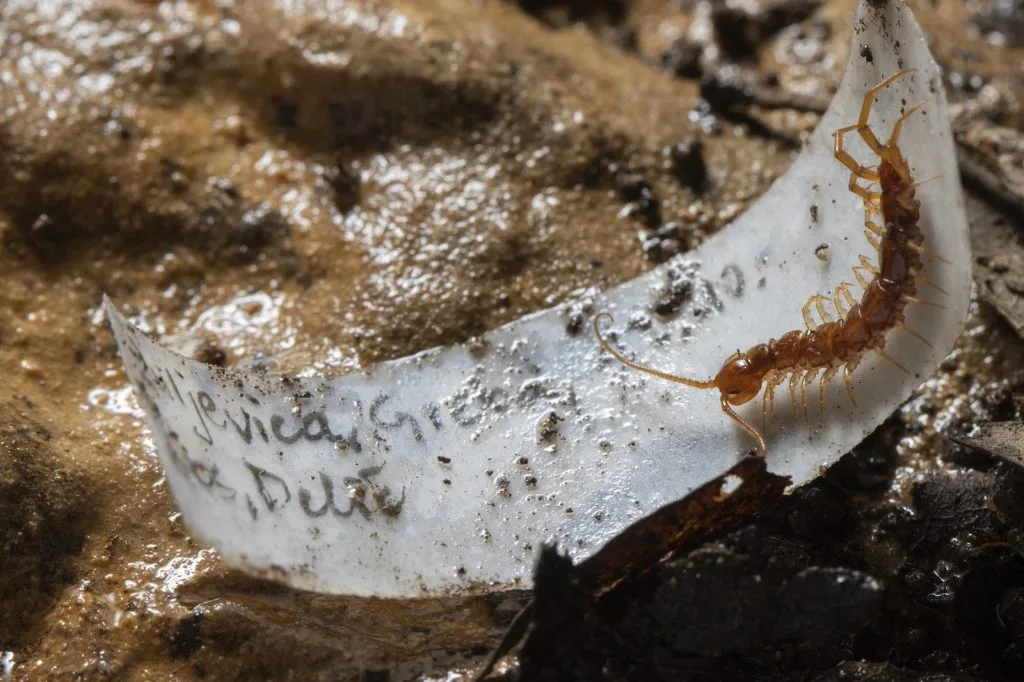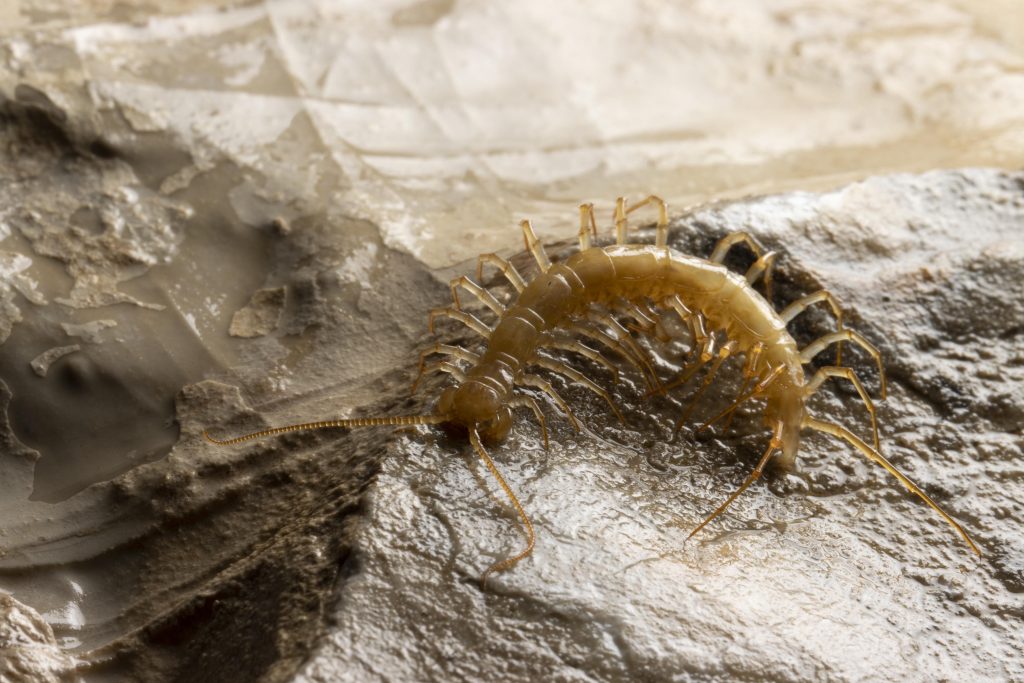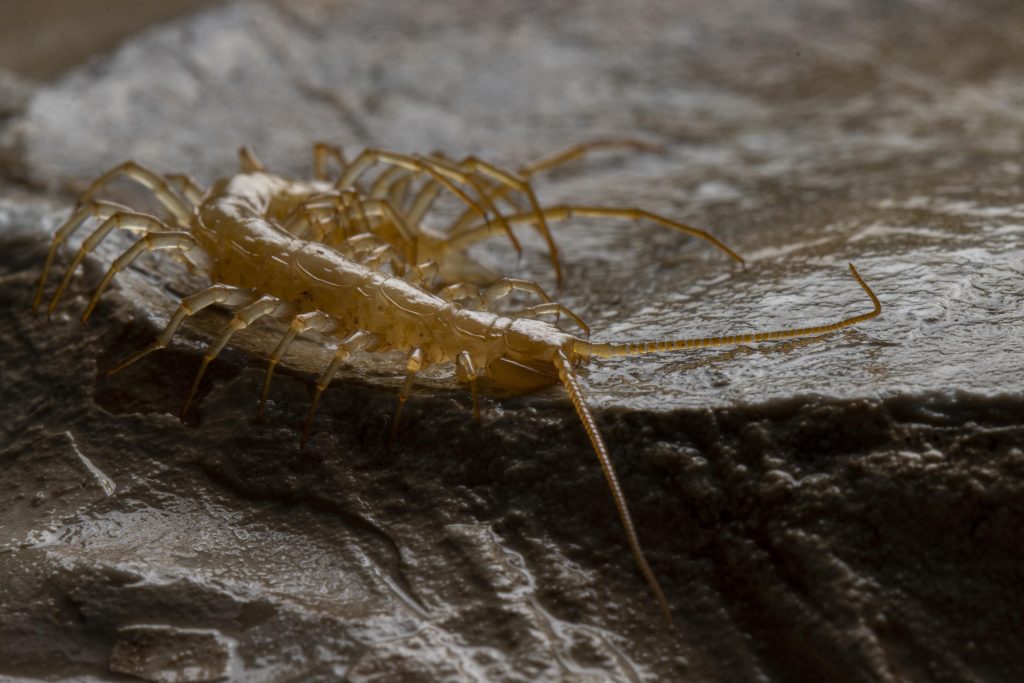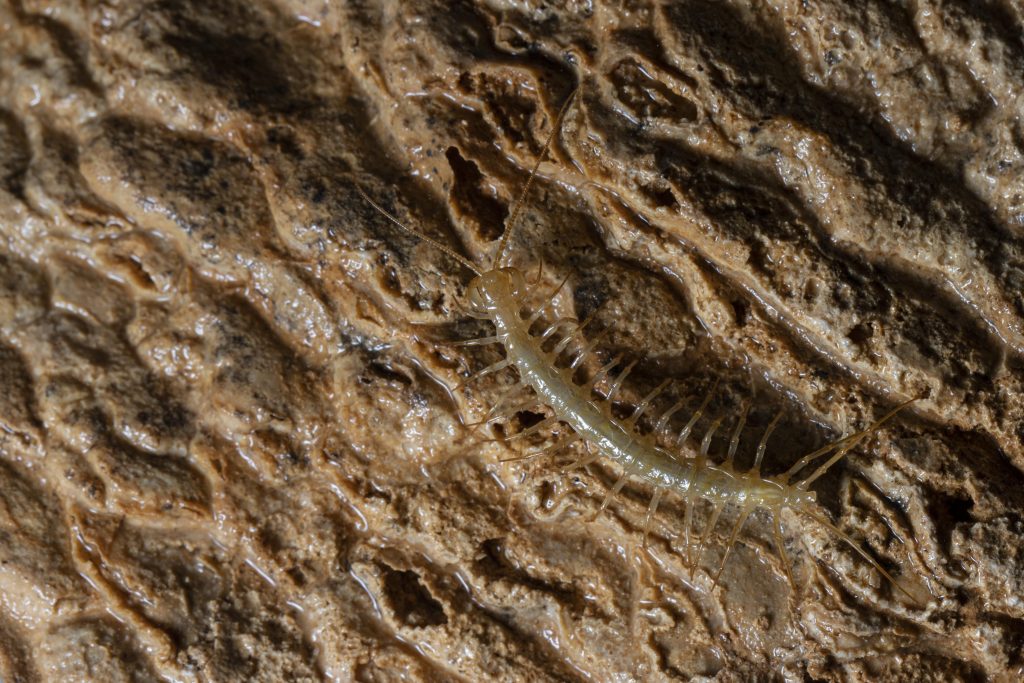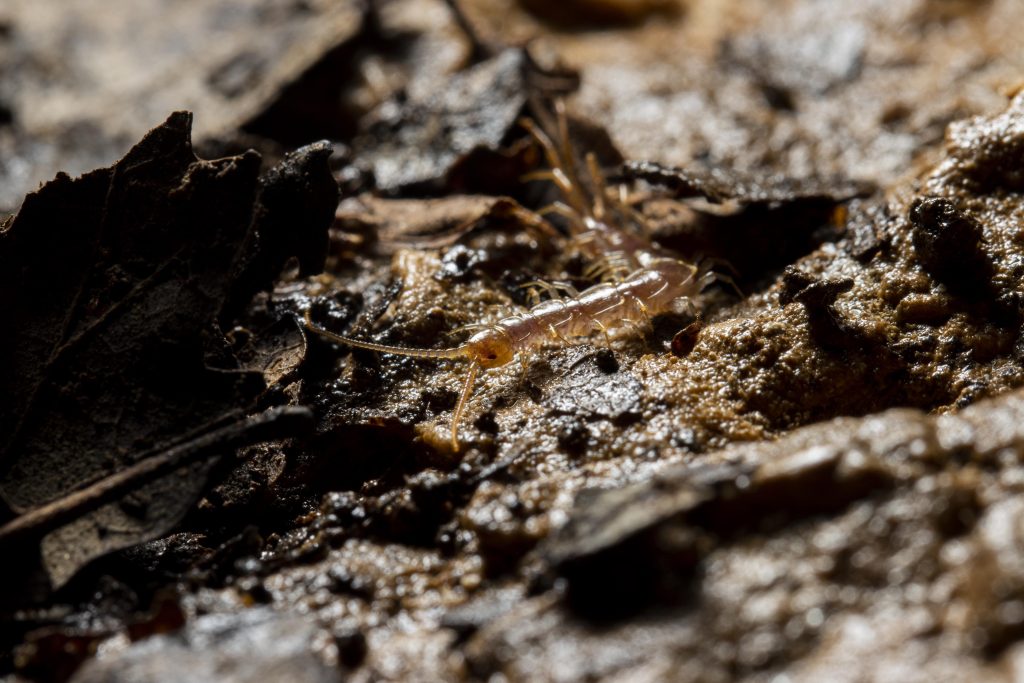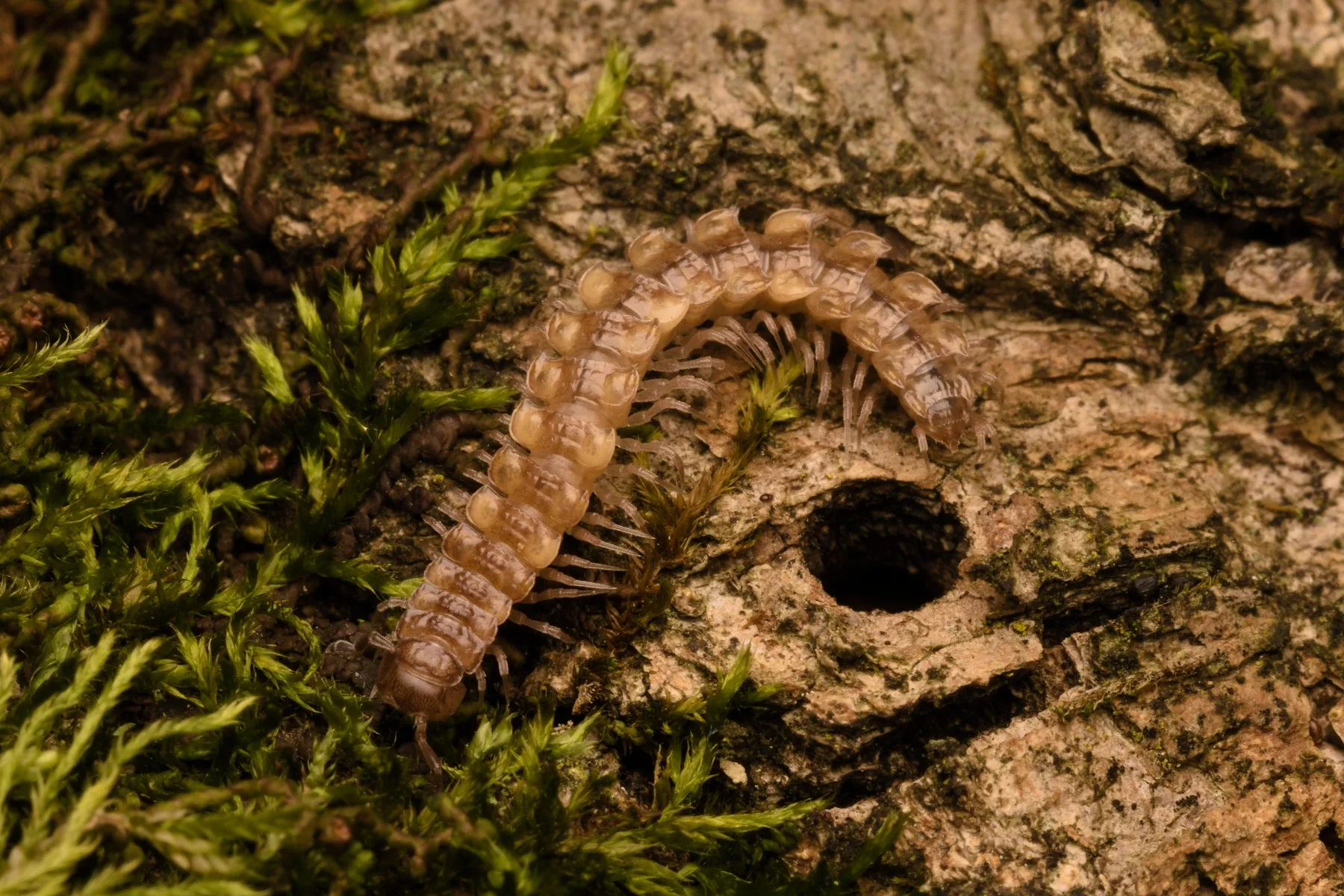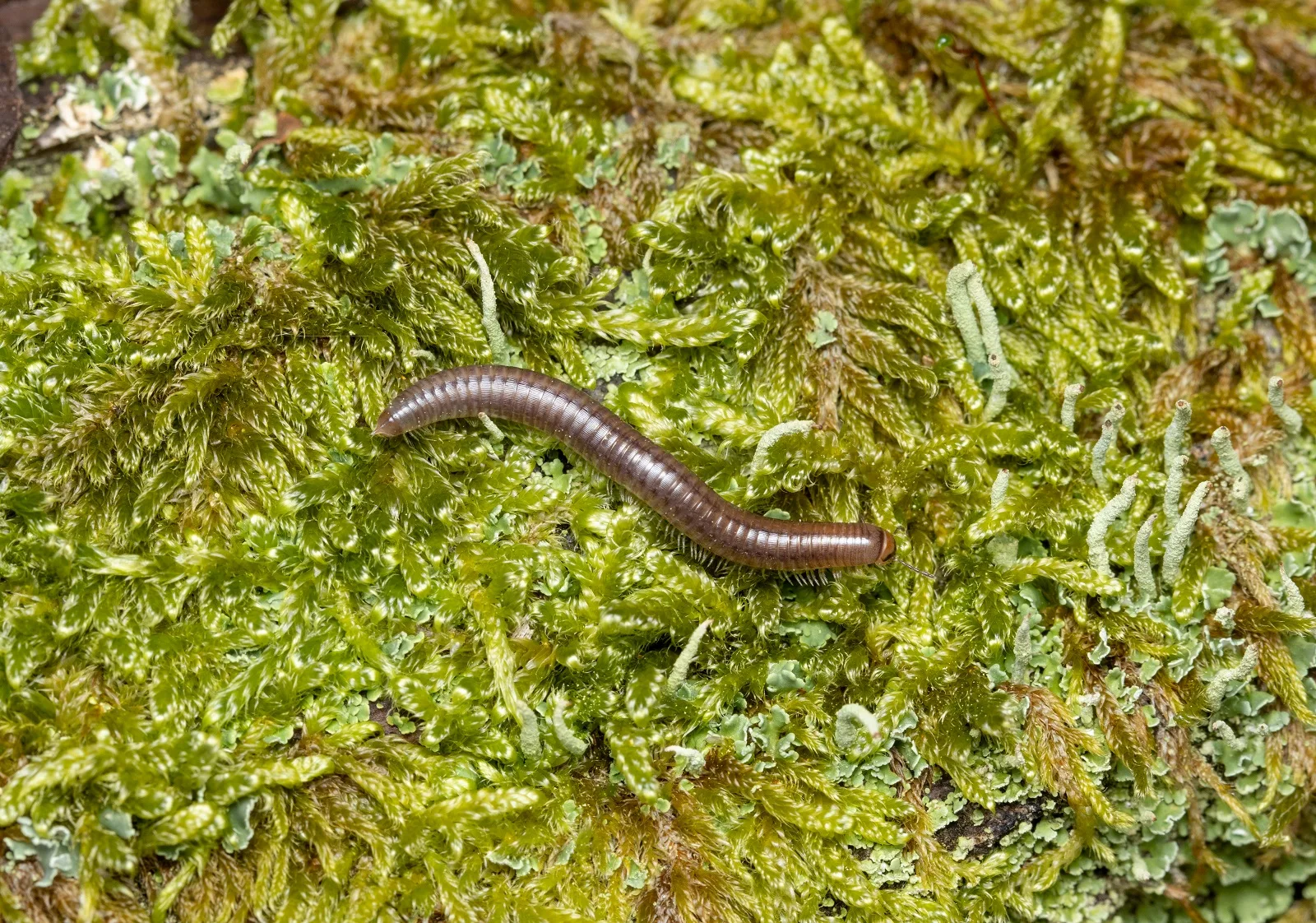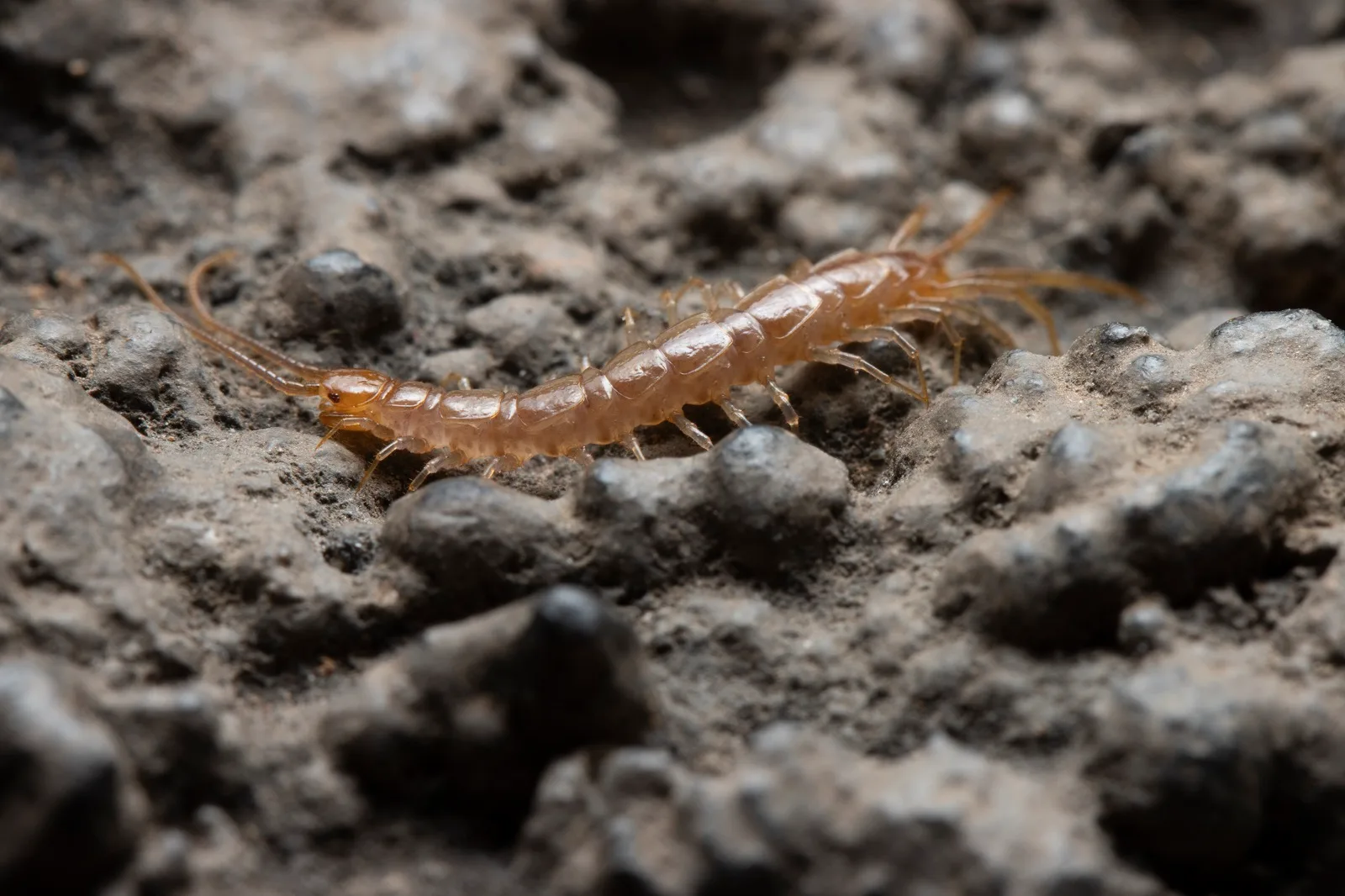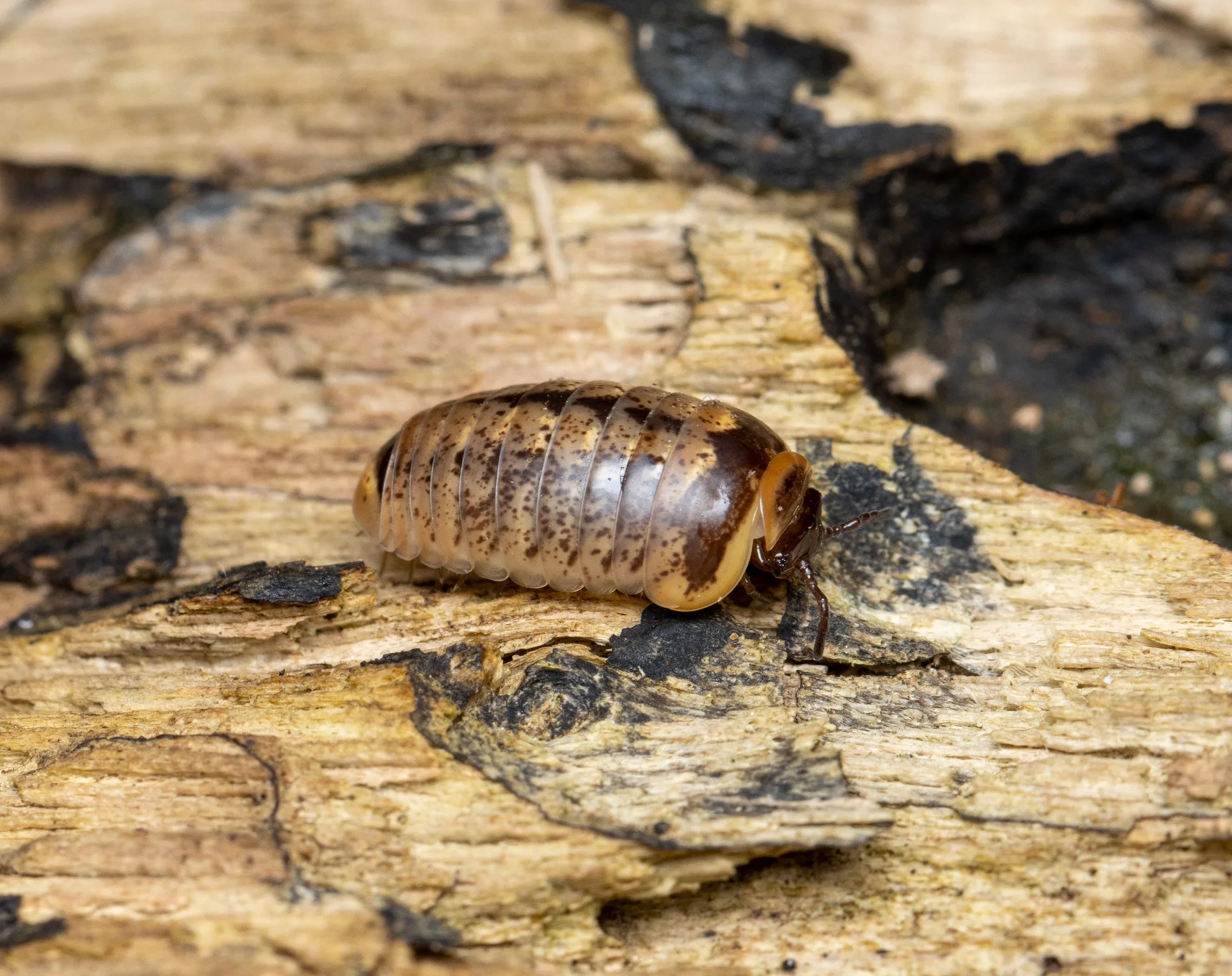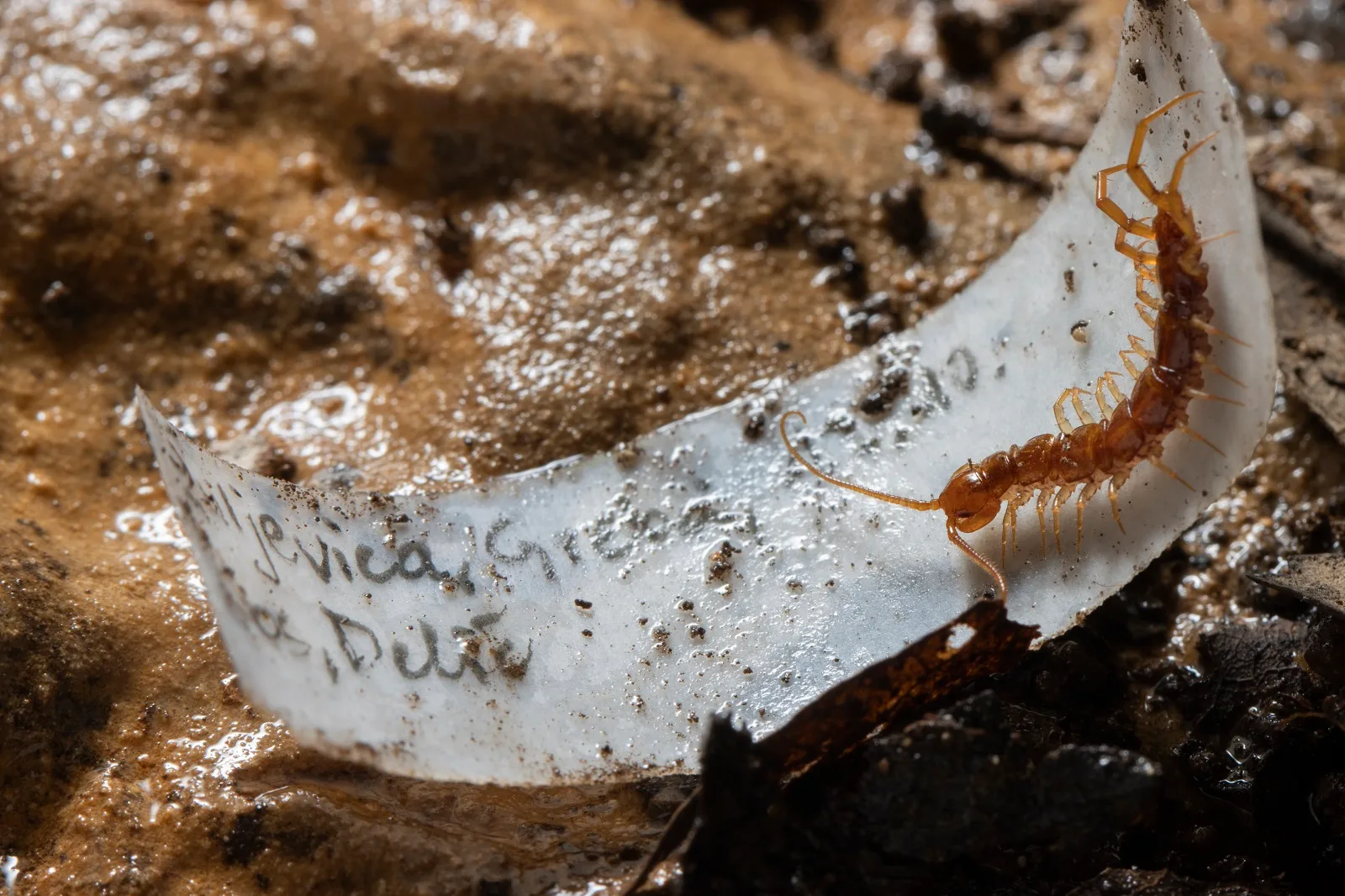
- Myriapods
Lithobius sp.
Centipedes (Chilopoda) are myriapods with a relatively simple body plan. Members of the genus Lithobius are medium sized centipedes attaining lengths up to five centimeters. The body consists of a head and a metamerically segmented trunk. The segments of the trunk are all single with one pair of legs each, in contrast to millipedes, that have most of the trunk segments fused in a pairwise fashion, forming the so called diplosomites.
The head consists of an acron and five segments which are fused into a uniform unit. Two groups of simple ocelli are located on the head. Additionally, the head bears a pair of long antennae, a pair of mandibles and two pairs of maxillae (maxillae I and II).
The trunk consists of 15 segments. The first pair of appendages on the trunk are maxillipeds also known as forcipules which are modified as poison fangs and used to inject venom. The tergites covering the dorsal side of the trunk alternate in length, one long tergite followed by a short one. The exceptions are the seventh and the eight tergite which are of equal length. Laterally on the trunk the tracheae have their openings (spiracles or stigmas). Each segment of the trunk carries one pair of walking legs. The length of legs increases towards the posterior of the trunk. At the coxae of the last leg pair pores of coxal organs are located which release the pheromones.
The centipedes are soil arthropods. They dwell in soil, leaf litter, under stones and similar relatively humid environments, since their exoskeleton protects them from desiccation only to some extent. Like other centipedes, members of the genus Lithobius are predators that feed on various small invertebrates. They hunt by pursuing or ambushing their prey. To subdue their prey, they inject it with venom from forcipules.
The mating begins with a courtship dance, during which the male and female touch each other with antennae and ultimate legs (last leg pair on the trunk). During the courtship dance the male deposits a small drop of sperm, which is taken up by the female. Fertilized female lays individual eggs one by one. Each egg is carried for a few days before it is finally deposited in the environment. Juveniles lacking a full complement of trunk segments hatch from the eggs.
More photos
Related arthropods

Authors
- Urban Bogataj,
- Gregor Bračko,
- Teo Delič,
- Cene Fišer,
- Žiga Fišer,
- Rok Kostanjšek,
- Rudi Verovnik,
- Miloš Vittori,
- Valerija Zakšek.
Students Vito Ham, Vesna Jurjevič, Gaj Kušar, and Adrijan Samuel Stell Pičman also participated in the project.
